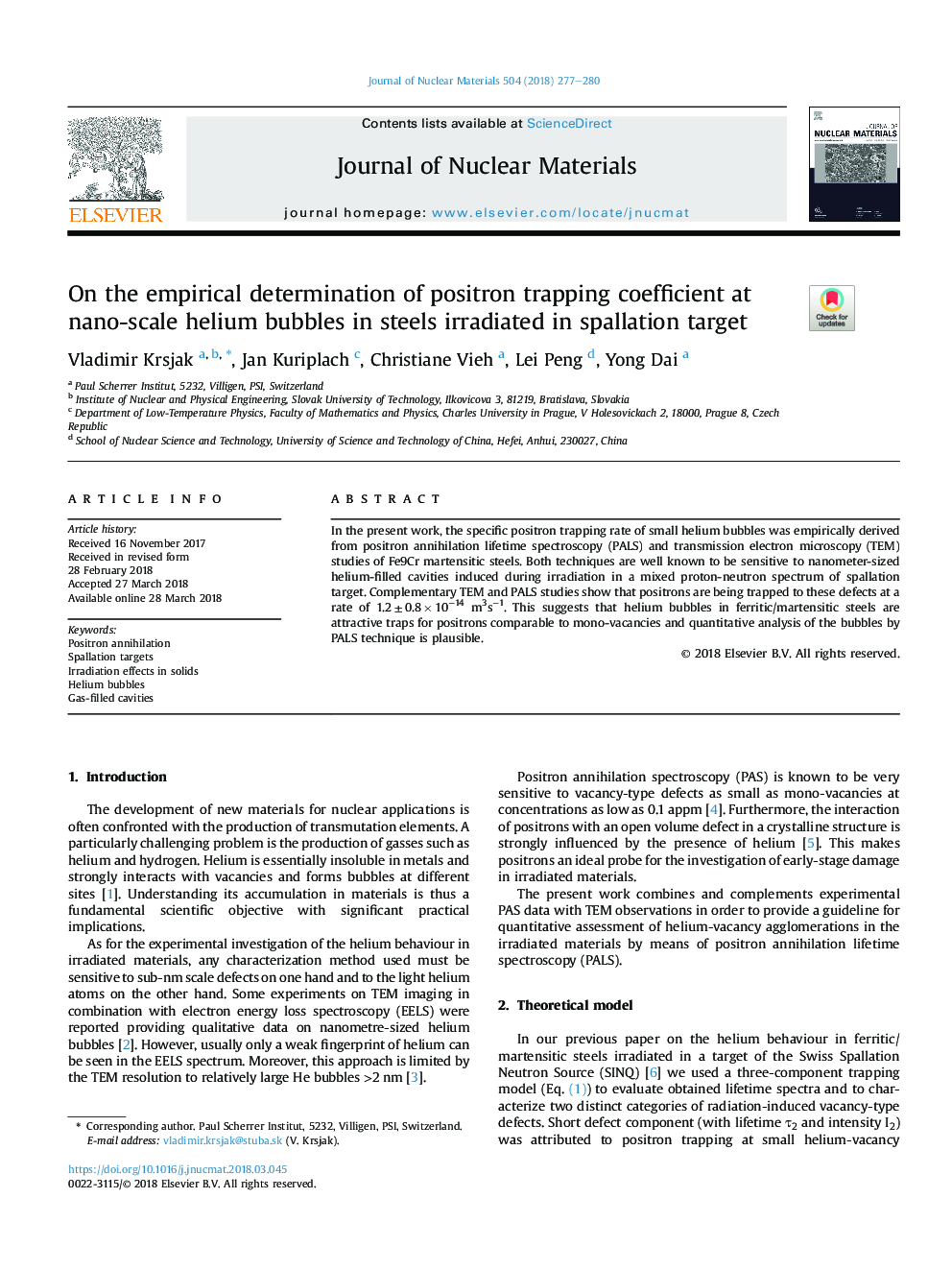| Article ID | Journal | Published Year | Pages | File Type |
|---|---|---|---|---|
| 7963286 | Journal of Nuclear Materials | 2018 | 4 Pages |
Abstract
In the present work, the specific positron trapping rate of small helium bubbles was empirically derived from positron annihilation lifetime spectroscopy (PALS) and transmission electron microscopy (TEM) studies of Fe9Cr martensitic steels. Both techniques are well known to be sensitive to nanometer-sized helium-filled cavities induced during irradiation in a mixed proton-neutron spectrum of spallation target. Complementary TEM and PALS studies show that positrons are being trapped to these defects at a rate of 1.2â¯Â±â¯0.8â¯Ãâ¯10â14 m3sâ1. This suggests that helium bubbles in ferritic/martensitic steels are attractive traps for positrons comparable to mono-vacancies and quantitative analysis of the bubbles by PALS technique is plausible.
Related Topics
Physical Sciences and Engineering
Energy
Nuclear Energy and Engineering
Authors
Vladimir Krsjak, Jan Kuriplach, Christiane Vieh, Lei Peng, Yong Dai,
